12 Best Berry Plants for Edible Landscaping
Berry bushes that add both taste and beauty to your landscape
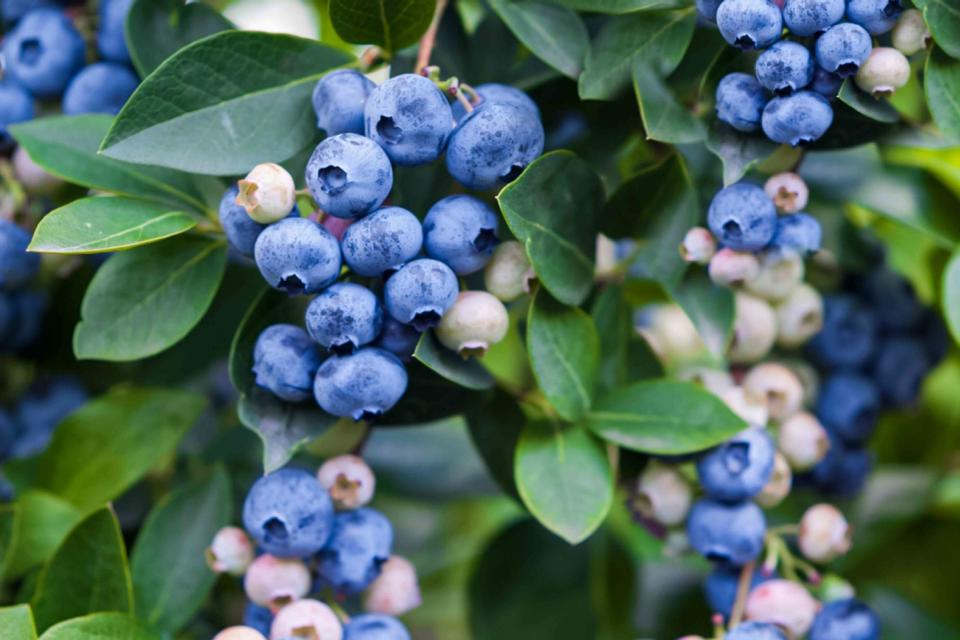
The Spruce / K. Dave
Many edible berry bushes can be incorporated throughout your yard rather than relegated to the vegetable garden. Berry plants look attractive throughout the growing season and you can even indulge in the fruit.
There are several ways to incorporate berries into your landscape. Edible berry bushes can be used as individual specimen plants or lined up as hedges. Low growers can be used as ground covers or edging plants. Vines can be trained along fences or over arbors. You can even grow some berries in containers to look good and have handy on the patio.
Consider the following list of 12 easy-to-grow, attractive, and delicious edible berry plants for your landscaping.
Tip
Berry plants are small enough to look appropriate in any size yard. Most have attractive leaves, flowers, and colorful berries. The berries usually require minimal maintenance, as they are rarely affected by serious pests and diseases. A good annual berry pruning routine keeps them healthy and shapely. The biggest chore for berry growers will be protecting the fruit from the birds and other passing critters.
Goji Berry
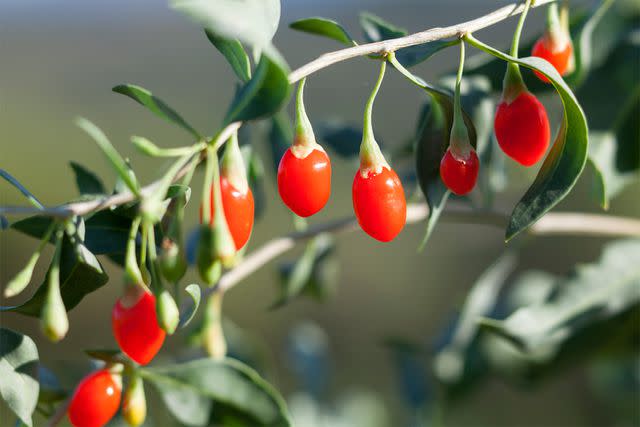
VladimirFLoyd / Getty Images
Goji berry (Lycium barbarum L.), also called wolfberry, matrimony vine, and boxthorn, can grow from 3 to 12 feet, especially if it's a vine. Purple or cream flowers in the spring are followed by small orange to red fruits. This berry bush thrives where other plants may not. Its fruit quality is surprisingly best when it's hot and dry. This fruit does not like cool or humid weather. This plant can become large and unwieldy if it is not pruned accordingly.
Name: Goji berry (Lycium barbarum L.)
USDA Hardiness Zones: 4-7
Light: Full sun
Soil: Light loam but adaptable and well-drained
Years to Harvest: Bears fruit one to two years after planting
Blackberry
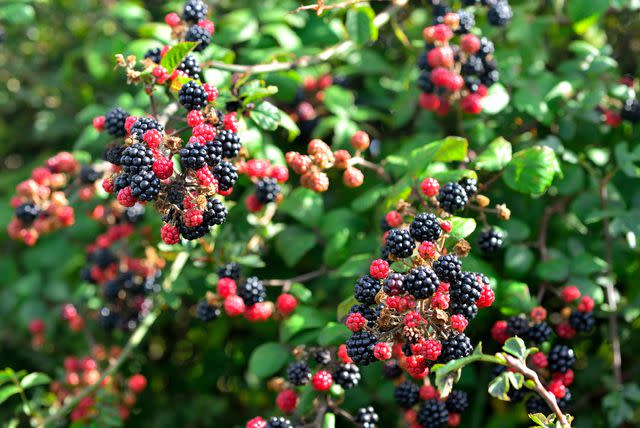
Jason Jones Travel Photography / Getty Images
Blackberries (Rubus fruticosus) thrive in temperate climates, offering plump berries throughout the summer. they are easy to grow, as long as they live in sunny conditions and well-drained, acidic soil. Choose a blackberry bush according to your preferred growth habit: erect thorny, erect thornless, or trailing thornless. If you have limited growing space, they will thrive in pots, too.
Name: Blackberry (Rubus fruticosus)
USDA Hardiness Zones: 5-9
Light: Full
Soil: Loamy, well-drained
Years to Harvest: Will begin producing berries in the third year in summer
Raspberry
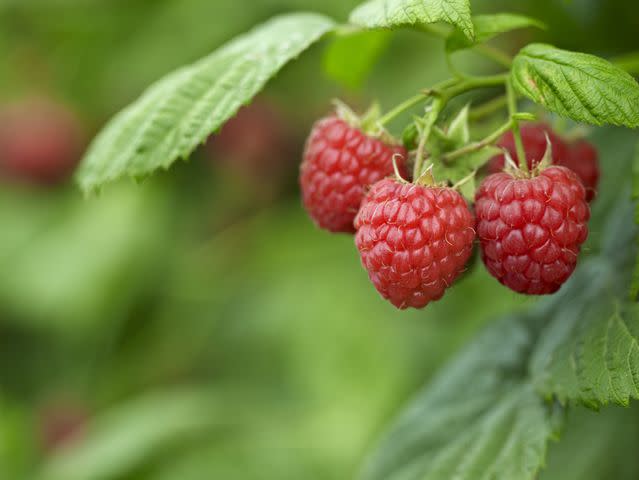
Michael Mahovlich / Getty Images
Raspberry (Rubus idaeus) develops little white blooms that grow into tasty red berries. You can grow two varieties of cultivated wild raspberries in your backyard—summer-fruiting and ever-bearing. Raspberries are part of the bramble group, which is a prickly, scrambling vine or shrub, Harvest summer-fruiting raspberry bushes once during the summer and harvest ever-bearing berries throughout the summer and into fall. Try the low-growing raspberry, ‛Formosa Carpet,' that is evergreen and spreads to form a mat ground cover. Plant raspberry in the early spring after the last frost.
Name: Raspberry (Rubus idaeus)
USDA Hardiness Zones: 4-8
Light: Full sun, partial shade
Soil: Well-drained
Years to Harvest: Produces fruit a year or two after planting, depending on the variety
Honeyberry
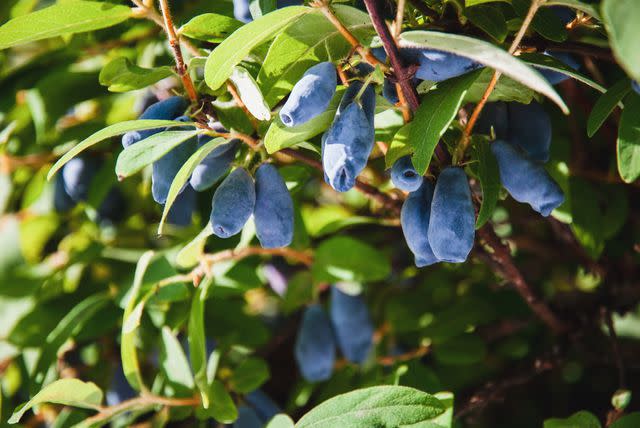
Nadya So / Getty Images
Honeyberries (Lonicera caerulea), a species of honeysuckle, are the most cold-hardy small fruits that can tolerate cold to minus 40 degrees Fahrenheit. You'll find numerous Russian/Eastern European cultivars to grow. This berry plant will not do well in climates where the summer heat goes above 85 degrees Fahrenheit. When harvesting, the fruit should be blue inside or it will taste tart if picked too soon. A fully ripe honeyberry has a flavor of blueberry-raspberry and black current.
Name: Honeyberry (Lonicera caerulea)
USDA Hardiness Zones: 1-8
Light: Full sun, partial shade
Soil: Well-drained with high organic matter
Years to Harvest: Begins fruiting one year after planting
Gooseberry
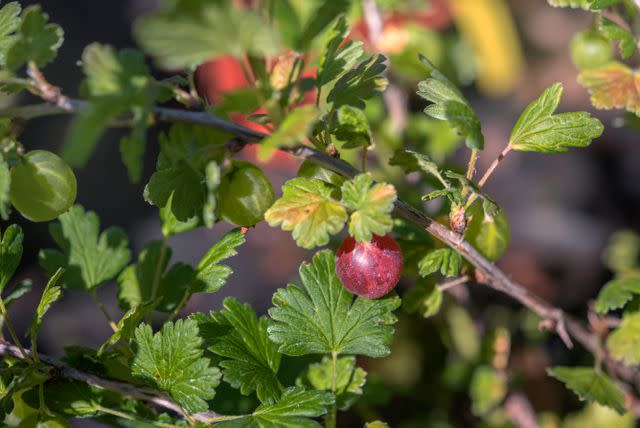
The Spruce / Evgeniya Vlasova
Gooseberries, also part of the brambles group, make delectable pies, jams, and jellies, but are not usually available to buy fresh. The tart berries are some of the easiest berries to grow. The main species of gooseberries include European gooseberry (Ribes uva-crispa), American gooseberry (Ribes hirtellum), plus several cultivars of each. All varieties ripen between late June and mid-July. If you plant these bushes, you could have berries for up to 20 years. The bushes are thorny so always wear protective gear, including long gloves, long sleeves, and pants.
Name: European gooseberry (Ribes uva-crispa), American gooseberry (Ribes hirtellum)
USDA Hardiness Zones: 4-6
Light: Full sun, partial shade
Soil: Loamy, sandy, well-drained
Years to Harvest: Gooseberries bear fruit on one-, two-, and three-year-old canes
Chokeberry
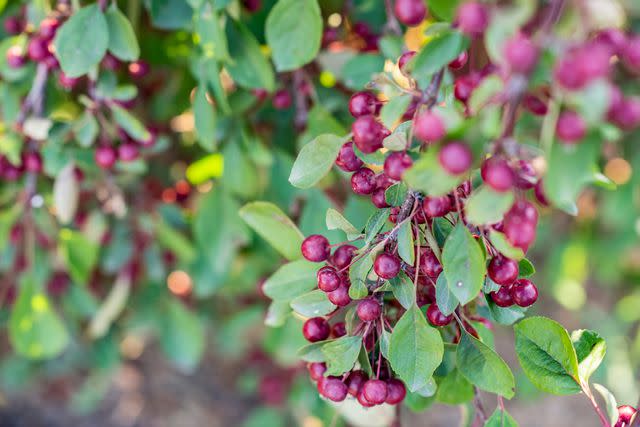
The Spruce / K. Dave
Chokeberry (Aronia melanocarpa) is a low-maintenance deciduous shrub with glossy, dark green leaves that turn red to reddish-purple in the fall. Clusters of small five-petaled flowers appear in the spring, and purplish-black to black fruits around the size of blueberries appear in the late summer to fall. It is highly adaptable and grows well in moist and dry locations. It's great for boggy areas where other plants won't thrive.
Name: Chokeberry (Aronia melanocarpa)
USDA Hardiness Zones: 3-8
Light: Full, partial
Soil: Well-drained
Years to Harvest: Red chokeberry fruits beginning at two years of age; black chokeberry fruits every second year
Loganberry
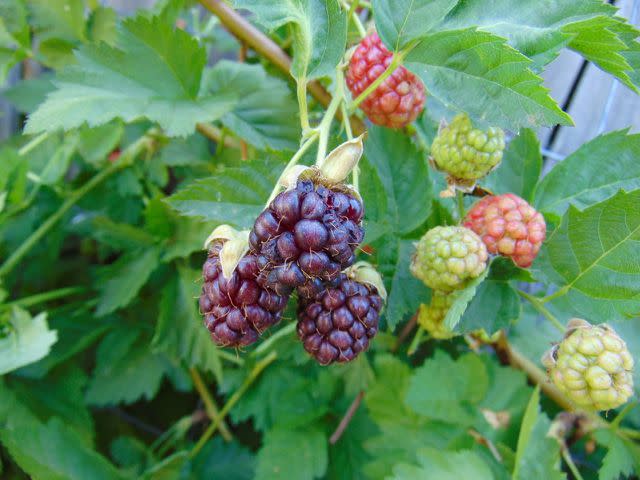
Nadiatalent / Wikimedia Commons / CC BY-SA 4.0
Loganberries (Rubus × loganobaccus) are hybrids of the North American blackberry (Rubus ursinus) and the European raspberry (Rubus idaeus). The fruits are a bit longer than raspberries with a more tart flavor. It's best if you grow them in the ground because they can grow too tall to be contained in pots. Once the berry bushes are established they will produce very sweet fruit that needs to be harvested twice a week.
Name: Loganberry (Rubus × loganobaccus)
USDA Hardiness Zones: 6-10
Light: Full sun
Soil: Well-drained
Years to Harvest: One year
Blueberries
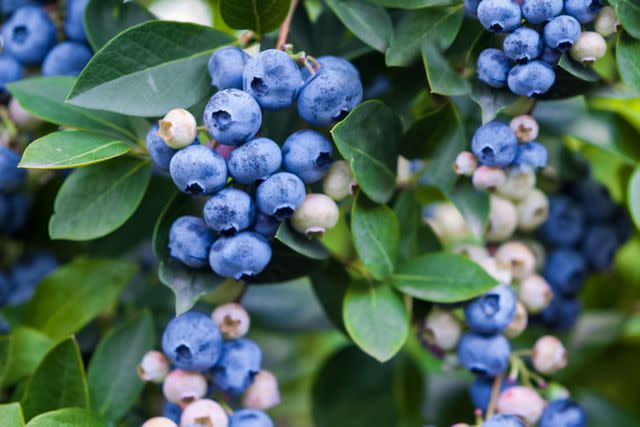
The Spruce / K. Dave
Choose between two options when growing blueberries (Vaccinium spp.), part of the brambles group, in your garden: highbush and lowbush blueberries.
Highbush blueberries make an excellent choice with their small white cup-shaped spring flowers and dazzling red color in the fall. Most highbush blueberries won't grow taller than 6 feet and can be grown in containers.
Lowbush blueberries only grow to about 18 inches high. They are spread by runners and with their ability to withstand dry soil, they make nice options for covering a spot where the grass doesn't want to grow.
Name: Blueberry (Vaccinium spp.)
USDA Hardiness Zones: 3-9
Light: Full sun
Soil: Sandy, well-drained
Years to Harvest: Expect at least three growing seasons before a moderate harvest; a substantial harvest comes after six years
Elderberries
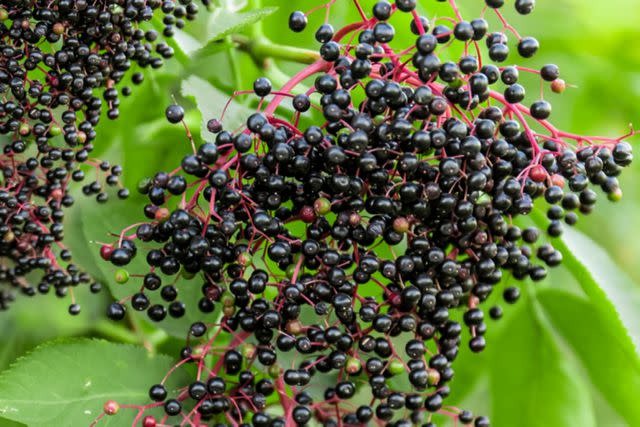
The Spruce / K. Dave
Elderberry (Sambucus canadensis) is a large shrub capable of reaching 20 feet tall. It can be pruned to maintain its size, but it is a beautiful shrub with sprays of star-shaped white flowers that give way to shiny dark-purple fruits. You can try your hand at winemaking or save them for jams and pie. Fall foliage is a mix of reds, yellow, and orange.
Name: Elderberry (Sambucus canadensis)
USDA Hardiness Zones: 3-9
Light: Full sun, partial shade
Soil: Moist but well-drained
Years to Harvest: Harvest from second or third-year canes
Kiwi
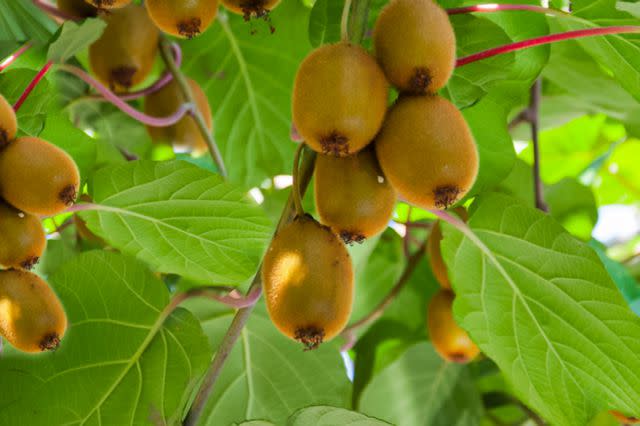
The Spruce / K. Dave
Kiwi vines are beautiful plants with big heart-shaped leaves. They are large, vigorous vines that attach by twining. They'll need strong support, but since they can live for decades, it's a good investment. hardy kiwi also produces a sweet edible fruit that is smaller than a traditional kiwi. Because most kiwi vines are dioecious, meaning you need a male and a female plant to get fruit. However, there are varieties, like ‛Issai,' that have been bred with both sex flowers on one plant.
Name: Hardy kiwi vine (Actinidia arguta)
USDA Hardiness Zones: 3-8
Light: Full, partial
Soil: Loamy, sandy, clay, moist
Years to Harvest: Three years
Strawberries
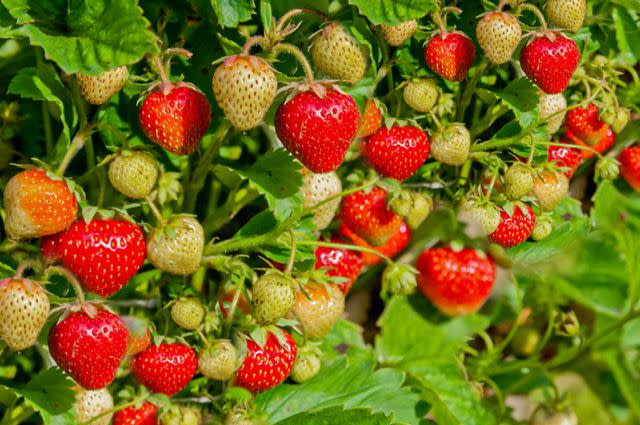
The Spruce / K. Dave
Strawberries are spreaders by nature and make excellent ground covers. The June bearing types will spread extensively by runners, but the everbearing and day-neutral varieties tend to be better behaved. They require some annual maintenance to keep the plants producing and they also need protection from birds and other animals, but you will generally get enough of a harvest to share. Or, grow your strawberries in containers and keep them safely on your deck.
Name: Strawberry (Fragaria ananassa)
USDA Hardiness Zones: 4-9
Light: Full sun
Soil: Rich, well-drained soil
Years to Harvest: One to two years
Miracle Berry
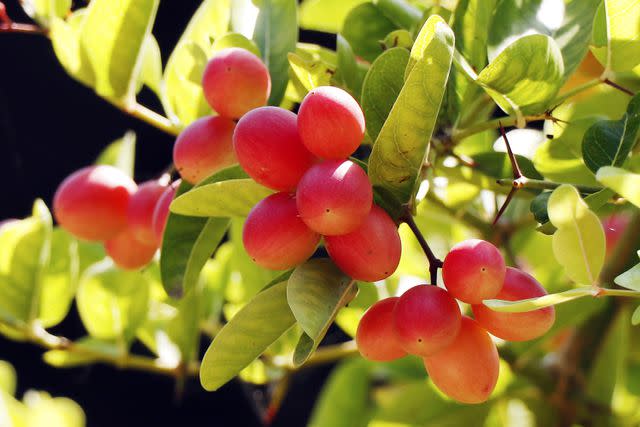
libin jose / Getty Images
Miracle berry (Synsepalum dulcificum), miracle fruit, or "sour to sweet" fruit, is best planted in containers because it does not tolerate frost. This small tropical berry is native to West Africa. Though it's a flavorless berry, it contains a protein to temporarily change your tastebuds so that anything you eat that's sour will taste sweet. For example, suck on the miracle berry, then suck on a lemon wedge and it will taste like you're drinking sweetened lemonade.
Name: Miracle fruit (Synsepalum dulcificum)
USDA Hardiness Zones: 9-11
Light: Full sun, partial shade
Soil: Airy pine-based potting mix or peat moss and perlite mix
Years to Harvest: Three years
More Info on Berry Bushes
You may want to explore more information about planting berry bushes or other edible plants. Here's what to read next.
Read the original article on The Spruce.

